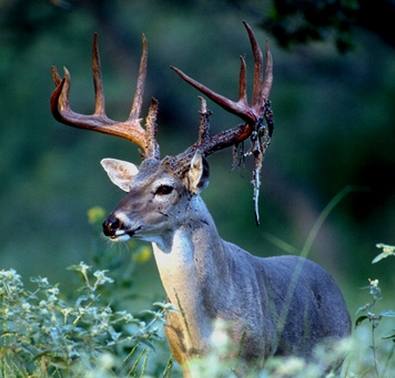When Do Bucks Lose Their Velvet?
It’s a common and important question hunters ask every year. When do bucks lose their velvet on their antlers? In short, it varies from buck to buck, but the transition from velvet-covered antlers to a “hard-horned” buck takes place in late-summer. The process of antler formation is said to be the most rapid growth known in the animal kingdom.
So, how does a white-tailed buck get such a huge quantity of minerals from his diet and into his antlers so rapidly? Well, they don’t. Yes, a white-tailed buck gets some of the minerals needed for antler growth from its diet. However, the remainder of the minerals needed come from the internal reserves found within its body.
Grow Antlers, Shed Antlers, Repeat
A whitetail buck can not get all the raw material it needs for this rapid growth of antlers from the food it eats that season. Instead, the deer must borrow it from within its body. In a process similar to that of osteoporosis in humans, minerals are taken from a buck’s ribs, sternum, and skull, and redeposited in growing antlers.

It’s an amazing process. In fact, research has found that bone density may decrease by as much as 30 percent in whitetail bucks following the antler growing season! It also helps explain why mature bucks can grow larger antlers than their younger counterparts. The skeletal bones of a buck continues to grow until it is at least 3 years of age.
As a result, only older bucks can store more of the minerals need for antler growth in their bones. In addition, they also do not have a requirement to use them for skeletal growth. Many bucks will exhibit a significant increase in antler size at 4 years of age.
That is also why the big-antlered bucks always seem to be the heaviest bucks, as well — because they are! Good body condition within each deer found on a property is the key to maintaining a quality deer population in any area. That’s why I continually stress sound habitat management be implemented on your property so that the land can provide optimal year-round deer nutrition.
When Bucks Shed, Lose Their Velvet?
By about the first of September antler growth is generally complete in whitetail bucks across their range. Almost as if someone flipped a switch, bucks undergo a rapid transformation. When it happens, bucks shed the soft velvet from the exterior of their antlers and start to beef-up for the breeding season.
This is marked by a sharp rise in testosterone level that triggers a shutdown of the blood supply to the velvet, which results in velvet dying and being totally removed with amazing speed. The velvet will simply fall off, though many bucks because of increased testosterone levels will begin to rub on shrubs and small trees. Lose velvet hanging from shedding antlers can also be annoying, as witnessed in the video below:
Lastly, when I say velvet is lost fast, I mean fast. Velvet can be completely shed from a whitetail buck’s antlers within a day or two. In fact, I’ve seen an older age class buck with no sign of shedding velvet that was sporting completely clean antlers within 22 hours! Antlers are cool, but white-tailed deer are amazing in their own right.











































